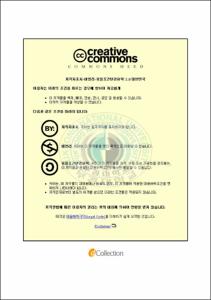ALTERNATIVE MEASURES FOR EFFECTIVE MANAGEMENT OF SHRIMP TRAWLING IN ARAFURA SEA, INDONESIA
- Alternative Title
- 인도네시아 아라푸라 해역 새우트롤어업의 효과적인 어업관리 수단에 관한 연구
- Abstract
- This study identified the current status of fisheries management of shrimp trawling in Arafura Sea. Recent management measures are taken to utilize and maintain the fisheries resources in an optimal manner. Those include 2 main approaches which are input control focused on license system and application of technical measures. Main structure of this management is establishing community-based fisheries management.
However, fisheries management of shrimp trawling has not been much effective so that excessive fishing effort is occurred and it results on overfishing. This study identifies ineffectiveness of the fisheries management of shrimp trawling in Arafura Sea and emphasize on the effective solution of the overfishing.
Approaches to the solution are using bio-economic analysis to develop alternative measures of effective fisheries management focus on using BRD of shrimp trawling or reducing fishing effort.
To estimate Maximum Sustainable Yield (MSY) and fishing effort in MSY level (EMSY), this study uses surplus production models which is namely (1) Schaefer (1957) model, (2) Schnute (1977) model and (3) Walters and Hilborn (1976) model and two exponential growth models, (4) Fox (1970) model, and (5) Clark, Yoshimoto and Pooley (1992) model.
Based on the bioeconomic result, through collecting the problems of ineffective fisheries management of shrimp trawling and many kind of policy analysis, this study suggests some alternative measures for effective fisheries management of shrimp trawling. Those alternative measures are (1) limiting fishing effort to the MSY level by relocating some trawl vessel to new trawlable area, (2) controlling license issuance and establishing closure area and closure season, (3) using environmentally friendly trawl net which optimally reduce by-catch species and maintain shrimp catch (4) establishing clear fishing zone boundary by using longitude and latitude as a definite lines and (5) strengthening regulation enforcement through co-management system and monitoring, controlling and surveillance (MCS) system.
- Issued Date
- 2008
- Awarded Date
- 2008. 8
- Type
- Dissertation
- Publisher
- 부경대학교 대학원
- Alternative Author(s)
- 누룰 아프이다티
- Affiliation
- 부경대학교 대학원
- Department
- 대학원 해양산업경영학과
- Advisor
- 이상구
- Table Of Contents
- 요약 = iii
Abstract = v
LIST OF TABLES = vii
LIST OF FIGURES = viii
I. INTRODUCTION = 1
1. Background and Objectives = 1
2. Method of Study = 2
3. Scope of the Study = 4
II. FISHERIES RESOURCES STATUS = 4
1. The Status of Marine Capture Resources = 4
2. Shrimp Resources = 8
3. By-catch: Resource Potency and Problem = 11
III. SHRIMP TRAWLING AND THE IMPACT = 15
1. Fishing Area = 15
2. Fishing Effort = 19
3. Trawling Impacts = 27
3.1. Discard of By-catch Species = 27
3.2. Ecological Damage = 29
3.3. Social Conflict = 31
IV. FISHERIES MANAGEMENT OF SHRIMP TRAWLING = 32
1. Input Controls = 34
1.1. License System = 34
1.2. Fishing Zone = 36
2. Output Control = 38
3. Technical Measures = 39
3.1. Utilizing By-catch Reducing Device (BRD) = 39
3.2. Minimum Mesh Size = 40
3.3. Fishing Vessel Size = 41
3.4. Utilization of By-catch Species = 41
4. Community-Based Fishery Management = 42
V. THE DRAWBACKS OF FISHERIES MANAGEMENT OF SHRIMP = 44
1. Reluctance against BRD = 45
2. Obscurity of Fishing Zone Boundary = 46
3. Problems on Trawl Nomenclature = 48
4. Bio-economic Analysis for Shrimp Trawling = 49
5. Result of Bio-economic Analysis = 53
VI. CONCLUSSION AND RECOMMENDATIONS = 59
1. Conclusion = 59
1.1. Limiting Fishing Effort = 60
1.2. License Control = 61
1.3. Closure Season and Closure Ares = 62
1.4. Environmentally Friendly Trawl Net = 64
1.5. Obvious Fishing Zone Boundaries = 66
1.6. Enforcing Regulation through co-management System = 68
1.7. Monitoring, Controlling and Surveillance (MCS) System = 68
2. Recommendations = 72
3. Limitation of this study and future suggestion = 74
ACKNOWLEDGEMENT = 75
REFERENCES = 76
APPENDIX = 81
Appendix 1. Species caught by shrimp trawl in Arafura Sea = 81
Appendix 2. Number of shrimp and other crustacean production = 82
Appendix 3. Number of fishing vessel according to the gross ton = 83
Appendix 4. Summary of Bio-economic Analysis Result = 84
Appendix 5. Schaefer Model = 86
Appendix 6. Fox Model = 87
Appendix 7. Schnute Model = 88
Appendix 8. Walter & Hilborn Model = 89
Appendix 9. Clark, Yoshimoto & Pooley (CYP) Model = 90
Appendix 10. Comparison between actual catch WH-model catch and CYP model = 91
Appendix 11. Comparison between actual CPUE WH-model CPUE and CYP model = 92
- Degree
- Master
- Files in This Item:
-
-
Download
 ALTERNATIVE MEASURES FOR EFFECTIVE MANAGEMENT OF SHRIMP TRAWLING IN ARAFURA SEA, INDONESIA.pdf
기타 데이터 / 1.98 MB / Adobe PDF
ALTERNATIVE MEASURES FOR EFFECTIVE MANAGEMENT OF SHRIMP TRAWLING IN ARAFURA SEA, INDONESIA.pdf
기타 데이터 / 1.98 MB / Adobe PDF
-
Items in Repository are protected by copyright, with all rights reserved, unless otherwise indicated.